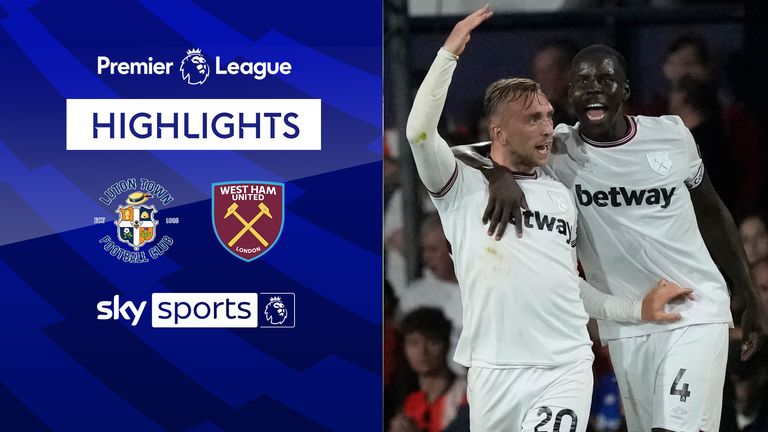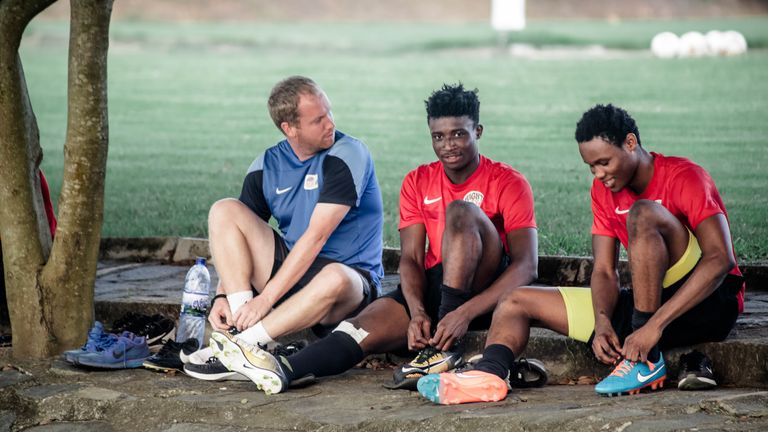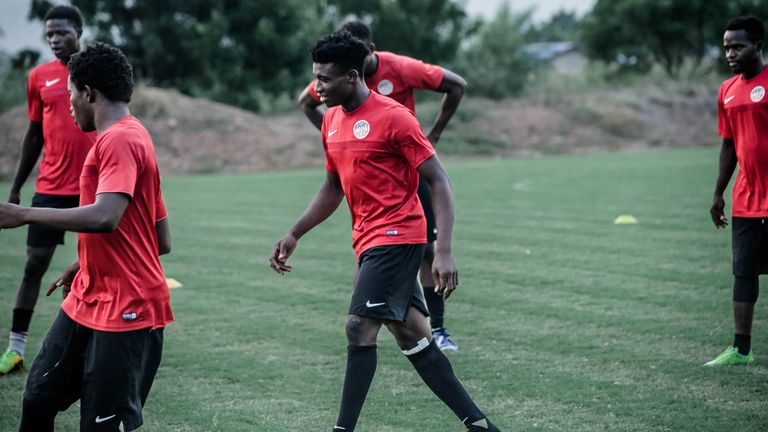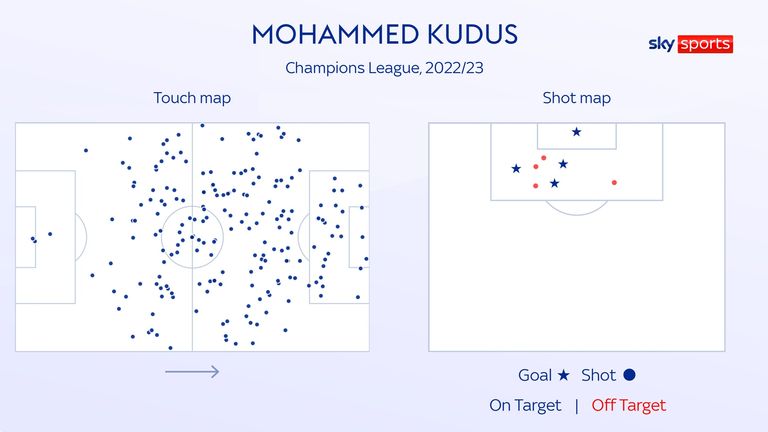When Mohammed Kudus made his Premier League debut at Kenilworth Road, he was the youngest West Ham player on the pitch. In fact, at 23, he had almost three years on the next youngest of the 14 players used by David Moyes at Luton that evening.
As a result, the temptation might be to view Kudus as a project signing even at £38m. One for the future, a player who will need time to assimilate to the demands. It would be a mistake. Kudus is a long-term investment but a player ready to make an impact now.
He has packed plenty in already since arriving in Europe at the age of 17. West Ham supporters will remember his World Cup goals but it is two years now since he won the double with Ajax and five since his debut for Danish club FC Nordsjaelland.
Throughout it all, he has always entertained.
“Expect a player who wants to please the crowd, wants to express himself,” former Nordsjaelland boss Flemming Pedersen tells Sky Sports. “He is such a technically skilful player. He has these amazing individual skills. And then, he has this extreme physical power.”
It is an unusual combination. The trickiest of dribblers tend to come with a slender frame but Kudus is stocky, able to take up position in the centre of the pitch and then burst through the spaces with that winger-like ability to glide beyond and between.
“It is not normal to see a player retain their balance in one-on-one duels with such a low centre of gravity. Sometimes you think he must fall and then half a metre from the ground he works himself up again and goes on this slaloming dribble between opponents.”
Predictably, he was adored at FC Nordsjaelland and the same was true of his time in Amsterdam. Perhaps more surprisingly, according to his former coach, it was a view shared by supporters of the opposition too. West Ham have had a few like that over the years.
“Even the fans from other clubs in Denmark loved to watch him,” laughs Pedersen. There is a quiet confidence to Kudus too. Pedersen once asked him if he realised he was the best player in the competition. With a smile, he confirmed that he did.
“He is extremely humble,” insists Pedersen. “But he has a good sense of humour. You have to get into his head. He will not approach you so it is important for the coaching staff to get to know him. Just give him the chance to open up because he has so much to offer.”
In that respect, Pedersen likens him to Michael Essien, another Ghanaian, now working as part of the coaching staff at Nordsjaelland. Essien was 22 when he came to the Premier League and immediately earned his place in Chelsea’s title-winning team.
There is a reason why Pedersen is convinced that Kudus has the mentality to make the adjustment too. His three years at Ajax will help, of course, a period in which he proved himself at Champions League level, scoring goals against Liverpool and Napoli.
But it owes much to his background within the Right to Dream academy in Ghana, the education that they provide for their players, and the seamless transition to the European game that follows at Nordsjaelland – the club bought by the academy for this purpose.
Selling the next game’s next stars is part of the model and Kudus was among the first to make the step. They knew that the demand was for young talent, but young talent that already had the tactical acumen to adapt to the toughest competitions in Europe.
They call it accelerated learning.
“We want to create this safe environment where players dare to play with risk,” says Pedersen. “This is so important with young players. The reason why we call it accelerated learning is because when you are 20 you should play like you are 27.”
But how do you actually coach that?
“There are several parts to it,” he explains.
“The first part of it is to give them a clear style of play with clear principles so they do not get lost in the game because the game can be so complex. We decrease the player’s options in the game so that instead of having 10 possibilities, they have five.”
Speed and accuracy are essential at the top level. This helps with both. “In our experience, your decision-making is quicker and there is a higher probability of success.” But surely decreasing the options stifles creativity? No, insists Pedersen. It helps it flourish.
“Decreasing the options gives them a structure. It is definitely not rigid. Within that framework, players can be creative. For example, before you receive the ball, if you already have a couple of plans in mind, you have more energy to make a creative decision.”
The stream of players emerging from the Right to Dream academy before making their way through the Nordsjaelland system and moving on to bigger things would suggest that the model is working. Kudus was the first but he was certainly not the last.
Kamaldeen Sulemana and Simon Adingra made their Premier League debuts even before Kudus, the latter marking his with a goal on the opening weekend of this season. Ernest Nuamah, 19, joined Lyon this summer in a club record sale for Nordsjaelland.
All have their own journey to make.
“Players are not bricks to be put in position,” says Pedersen. “That is too rigid. They are human beings with their own thoughts and ideas. The best way to align that with our style of play is to get into their head and understand how they are thinking.”
It will be fascinating to see how David Moyes plans to use Kudus.
Thanks to his education, there are options. “He is in a team sport so there is a framework in which he must play but he can play several positions depending on the style of play and how the coach wants him to play together with his team-mates,” says Pedersen.
“At FC Nordsjaelland, we used him as a central midfielder, going from box to box. We also used him as a more offensive midfielder and as a false number nine. But I think the best position for him at West Ham, at least at the start, would be towards the right.”
By that, Pedersen means the channel rather than sticking him out on the wing. “Not as a right-winger, although he can go on the outside, but playing in that right half-space, and having a good offensive full-back outside him to provide depth.”
He does not doubt that Kudus has the talent and mentality to shine. He may be a relative youngster at West Ham but this is no fledgling. “Two years in Denmark. Three years at the best club in Holland where they are always expected to win,” adds Pedersen.
“He is ready for the Premier League.”










